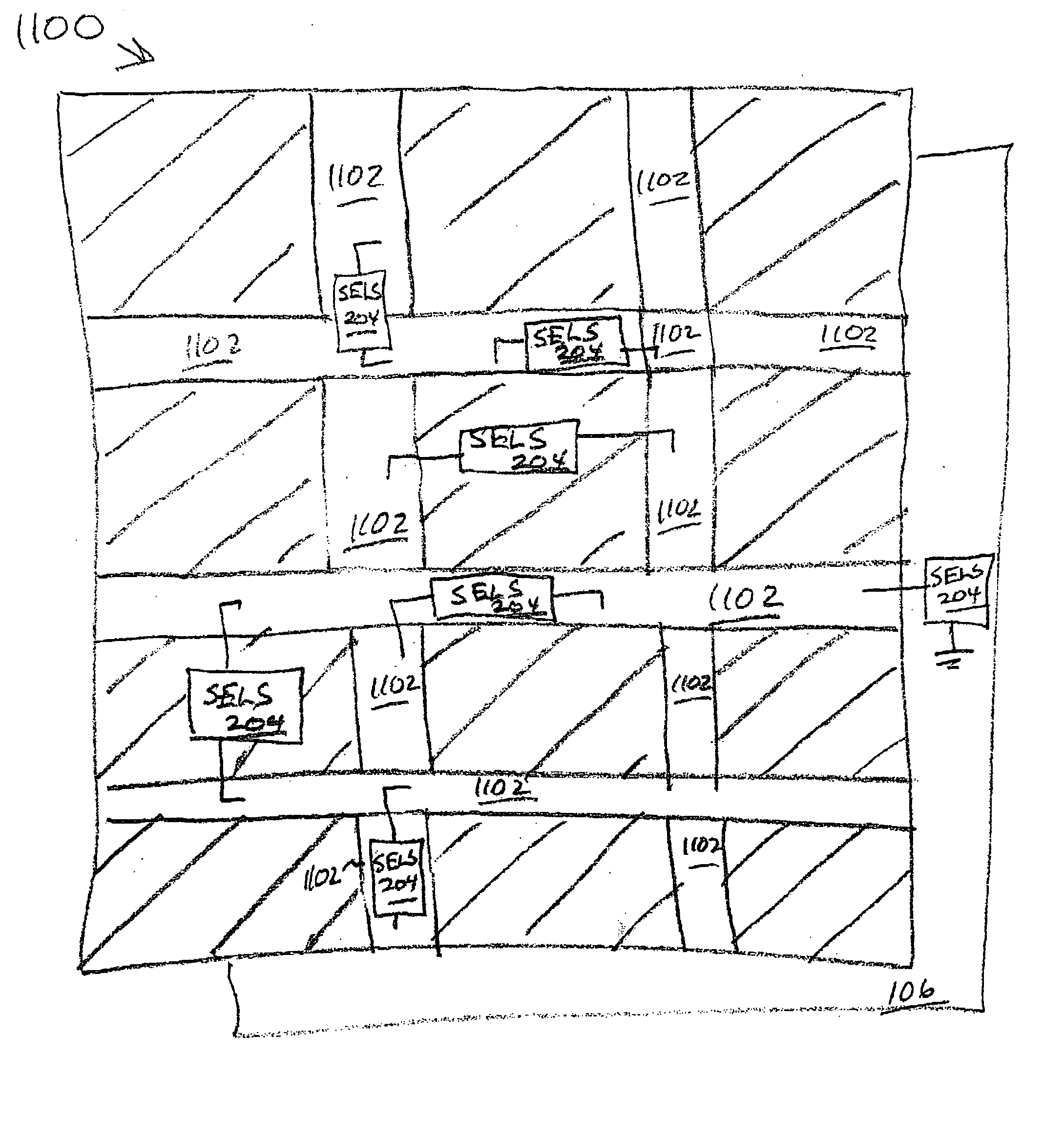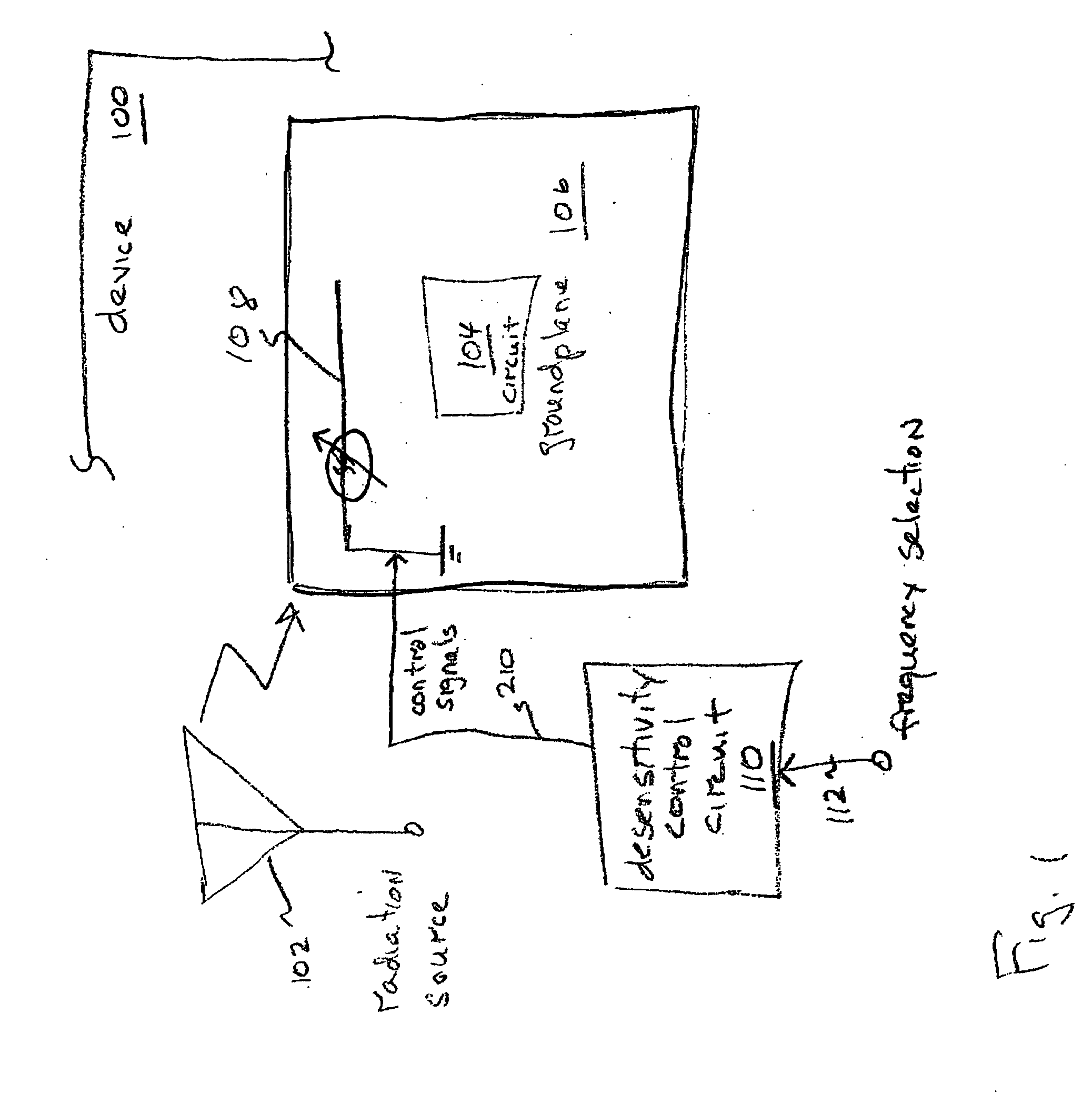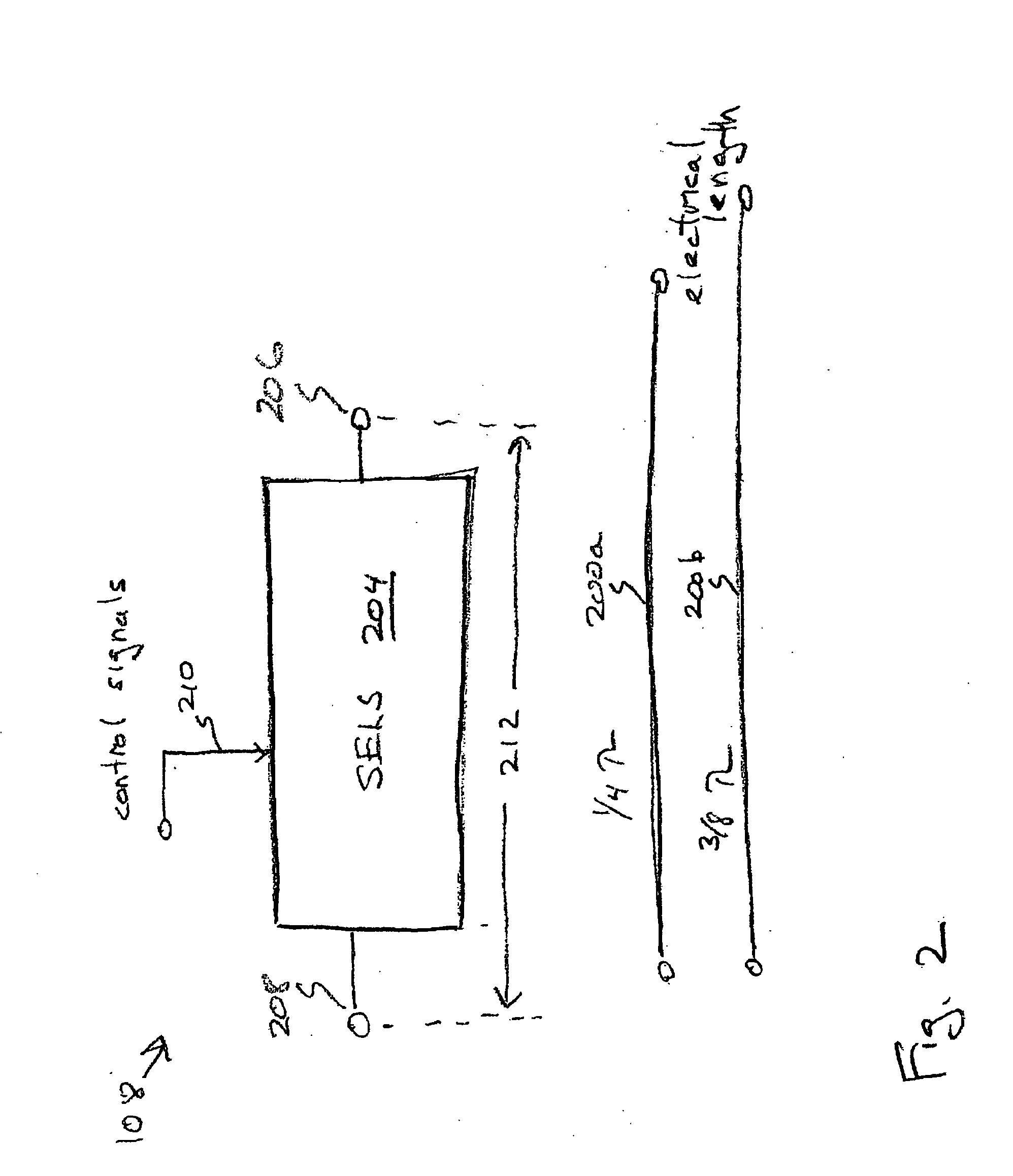Reconfigurable radiation desensitivity bracket systems and methods
a radiation desensitivity and bracket technology, applied in the field of wireless communication, can solve the problems of radiation pattern and radiation-susceptible circuitry issues, and counterpoise being susceptible to changes in the design and location of proximate circuitry, so as to reduce the effect of radiation-induced currents
- Summary
- Abstract
- Description
- Claims
- Application Information
AI Technical Summary
Benefits of technology
Problems solved by technology
Method used
Image
Examples
Embodiment Construction
[0032] OF THE PREFERRED EMBODIMENTS
[0033]FIG. 1 is a schematic block diagram of the present invention device with a reconfigurable radiation desensitivity bracket. The device 100 comprises a radiation source 102 and an electrical circuit 104 having a groundplane 106. A reconfigurable radiation desensitivity bracket 108 is coupled to the groundplane 106. The electrical circuit 104 may be components, such as integrated circuits (ICs), resistors, transistors, and the like, mounted on a printed circuit board (PCB). Otherwise, the electrical circuit 104 may be a display, a connector, or keypad, to name a few examples. The radiation source 102 may be a transmitter, antenna, microprocessor, electrical component, camera, connector, signal cable, or IC, to name a few conventional sources.
[0034] Two primary uses of the present invention bracket are for use in a portable or base station wireless device, where circuitry is susceptible to radiating elements such as an antenna, transmitter, tra...
PUM
 Login to View More
Login to View More Abstract
Description
Claims
Application Information
 Login to View More
Login to View More - R&D
- Intellectual Property
- Life Sciences
- Materials
- Tech Scout
- Unparalleled Data Quality
- Higher Quality Content
- 60% Fewer Hallucinations
Browse by: Latest US Patents, China's latest patents, Technical Efficacy Thesaurus, Application Domain, Technology Topic, Popular Technical Reports.
© 2025 PatSnap. All rights reserved.Legal|Privacy policy|Modern Slavery Act Transparency Statement|Sitemap|About US| Contact US: help@patsnap.com



